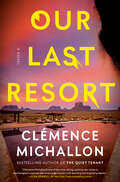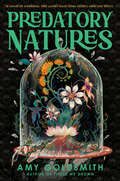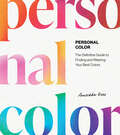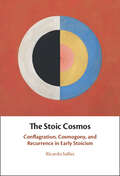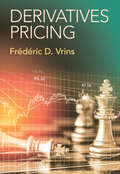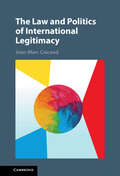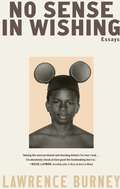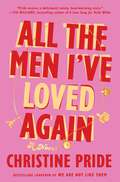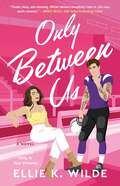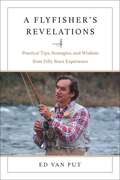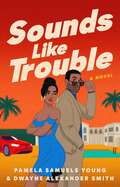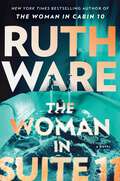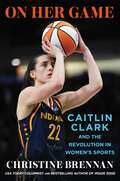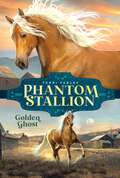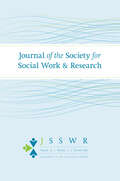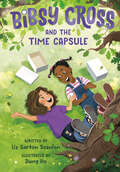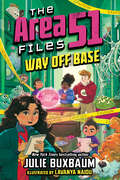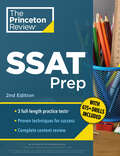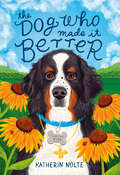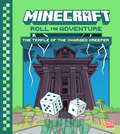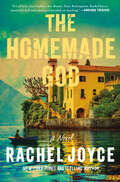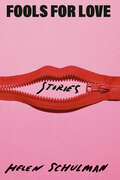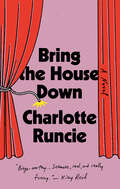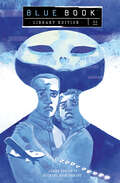- Table View
- List View
Our Last Resort: A Novel
by Clémence MichallonFrom the bestselling author of The Quiet Tenant comes an immersive new suspense novel: Fifteen years ago, Frida and her brother escaped a cult. Now her brother is the prime suspect in a murder investigation—and it isn&’t the first time.A MOST ANTICIPATED BOOK OF THE SUMMER: The New York Times, USA Today, Oprah Daily, Boston Globe, Marie Claire, CrimeReads, Apple Books, Goodreads, Brit + Co, She Reads, BuzzFeed, BookBub, Tag24&“Clémence Michallon is one of the most daring, exciting new voices in psychological suspense; she writes page turners with stunning and surprising depths.&” – #1 New York Times bestselling author Lisa Jewell"Thought-provoking and shocking. A perfect summer read.&”—Mary Kubica, New York Times bestselling author of She's Not SorryInnocence doesn't bail you out; it just makes you easier to trap.Frida and Gabriel arrive seeking a fresh start at the stunning Ara Hotel in the secluded desert of Escalante, Utah. Once so close they were able to finish each other&’s sentences, they&’ve grown apart in recent years after a sudden, unspeakable tragedy. Now, at the luxe resort, they are ready to reconnect between dips in the pool and hikes on spectacular desert trails. It all feels like paradise—until the dead body of a beautiful young woman who was vacationing at the Ara with her powerful, much older husband is discovered.When the local police arrive and suspicion quickly falls on Gabriel, Frida is forced to revisit memories from their upbringing in a cloistered cult in upstate New York, their dramatic escape, and the scandal that followed. Frida&’s belief in Gabriel&’s innocence never wavered at the time, but now even she can&’t ignore the evidence mounting against him.Alternating between past and present timelines, Our Last Resort builds toward a shattering climax that uncovers the fate of the murdered Ara guest and poses the question: how well do we ever really know those we love? Multi-layered, gripping, and intense, Clémence Michallon&’s latest suspense novel is a nail-biter until the last page, cementing her status as a major new talent in the genre.
Predatory Natures
by Amy GoldsmithA teen girl's dream job aboard a luxury train derails when she discovers the strange cargo being transported—a mysterious and beautiful greenhouse—but its flowering façade may hide deadly thorns beneath, in this atmospheric and lush novel from the author of Those We Drown.When Lara Williams gets a summer job aboard the luxury train the Banebury, she thinks she&’s landed a five-star escape from her past. Even after she learns that her ex-friend Rhys, who she definitely did not have feelings for before their relationship imploded, is one of her coworkers, she&’s determined to make things work.But on the first day of their journey, the trip takes a strange turn. Two mysterious carriages filled with an array of beautiful and rare plants are attached to the Banebury in the middle of the night.And with them comes a pair of siblings. Wealthy, mysterious, and charismatic, Gwen and Gwydion claim the plants they&’re transporting are for research, but Lara can&’t shake the feeling that there&’s something . . . otherworldly about the strange blooms. Something that will stop at nothing to ensure the Banebury never reaches its destination.Soon Lara will learn: You can&’t outrun your troubles. You have to grab them by their roots. And if she can&’t unearth the secrets of the Banebury, they might drag her down for good. . . .
Personal Color: The Definitive Guide to Finding and Wearing Your Best Colors
by Anuschka ReesThe definitive modern guide to finding your season and best colors, from the author of The Curated Closet.Why do some colors look radiant and effortless on one person but completely wash out another? The answer is color theory. In Personal Color, you&’ll harness the power of color theory to identify your color season and discover which shades best harmonize with your unique skin tone, hair, and eye color to make your natural beauty shine. In Personal Color you will learn how to:Accurately predict whether any color will suit you (or not)Find your color season (spring, summer, autumn, or winter) and subtype (clear, true, light, soft, or deep)Broaden your &“color horizon&” to go beyond neutrals and shades that are considered on-trend or safeAccurately assess photos and color descriptions when shopping onlineWear colors you love that are not in your seasonal palettePick the makeup and hair colors that work best for youFeaturing step-by-step instructions to identify your personal color palette, hundreds of color swatches, and example photos of models of all races, genders, and ages representing the color seasons, Personal Color is a timeless resource full of exercises, charts, cheat sheets, and glossaries that you&’ll find yourself reaching for again and again.
Hour of the Pumpkin Queen: Disney Tim Burton's The Nightmare Before Christmas (Pumpkin Queen)
by Megan ShepherdReturn to the world of Disney Tim Burton's The Nightmare Before Christmas in this long-awaited sequel to the #1 New York Times bestseller Long Live the Pumpkin Queen!Sally must embark on a time-bending adventure to save Halloween Town--and her beloved Jack Skellington.One year has passed since Sally wed her beloved Jack Skellington and stepped into her role as queen of Halloween Town. Even with her Jack at her side, though, being a ruler isn&’t easy, and Sally feels uncertain of her future. Her seams are stretched thin with her royal duties, her newfound family in Dream Town, and a desire to bring citizens from across the Hinterlands together. Then a simple potion demonstration at Sally&’s inaugural Halloween exhibition goes horribly wrong, and things unravel fast: Sally and her new rag doll apprentice, Luna, fall through a mysterious portal, landing in a new realm called Time Town. They discover that someone has tampered with the clock that controls Halloween Town, and Sally cannot return to the present-day version of her home unless she finds the culprit and resets time.Sally and Luna embark on a journey to unmask the truth, encountering more towns, friends, and foes along the way. But time is ticking, and as Sally fights to save Jack and her hometown, she wonders what kind of future she really wants--and what she must sacrifice to get it.
The Stoic Cosmos: Conflagration, Cosmogony, and Recurrence in Early Stoicism
by Ricardo SallesStoic cosmology held that our cosmos is periodically destroyed and restored. In this, it is unique compared to earlier cosmologies. Ricardo Salles offers a detailed reconstruction of the philosophical ideas behind this thesis which explains its uniqueness and how it competes with earlier cosmologies. The reconstruction is based on a rigorous analysis of the evidence, made accessible to non-specialists who are familiar with the history of ancient philosophy but do not specialise in Stoicism. Furthermore, the book reveals how the Stoics combined their meteorology, their cosmology, their physics and their metaphysics to explain natural phenomena, thereby illustrating how different disciplines can interact in ancient philosophy. It also refers to central questions in the interpretation of Stoicism, such as the role of the Stoic god in cosmology.
Derivatives Pricing
by Frédéric D. VrinsThis is a masters-level overview of the mathematical concepts needed to fully grasp the art of derivatives pricing, and a must-have for anyone considering a career in quantitative finance in industry or academia. Starting from the foundations of probability, this textbook allows students with limited technical background to build a solid knowledge of the most important principles. It offers a unique compromise between intuition and mathematics, even when discussing abstract ideas such as change of measure. Mathematical concepts are introduced initially using toy examples, before moving on to examples of finance cases, both in discrete and continuous time. Throughout, numerical applications and simulations illuminate the analytical results. The end-of-chapter exercises test students' understanding, with solved exercises at the end of each part to aid self-study. Additional resources are available online, including slides, code and an interactive app.
The Law and Politics of International Legitimacy
by Jean-Marc CoicaudThe book examines the significance of the issue of political legitimacy at the international level, focusing on international law. It adopts a descriptive, critical and reconstructive approach. In order to do so, the book clarifies what political legitimacy is in general and in the context of international law. The book analyses how international law contributes to a sense of legitimacy through notions such as international membership, international rights holding, fundamental principles and hierarchy of rights holding, rightful conduct and international authority. In addition, the book stresses the serious limitations of legitimacy of international law and of the current international order that it contributes to regulate and manage. This leads the book to identify the conditions under which international order and international law could overcome their problems of legitimacy and become more legitimate. The book is inter-disciplinary in nature, mobilizing international law, political and legal theory, philosophy, history, and political science.
No Sense in Wishing: Essays
by Lawrence Burney&“Among the most profound and dazzling debuts I've ever read.&” —Kiese Laymon, award-winning author of Heavy: An American Memoir An essay collection from culture critic Lawrence Burney that is a personal and analytical look at his home city of Baltimore, music from throughout the global Black diaspora, and the traditions that raised him.There are moments throughout our lives when we discover an artist, an album, a film, or a cultural artifact that leaves a lasting impression, helping inform how we understand the world, and ourselves, moving forward. In No Sense in Wishing, Lawrence Burney explores these profound interactions with incisive and energizing prose, offering us a personal and critical perspective on the people, places, music, and art that transformed him. In a time when music is spearheading Black Americans&’ connection with Africans on The Continent, Burney takes trips to cover the bubbling creative scenes in Lagos and Johannesburg that inspire teary-eyed reflections of self and belonging. Seeing his mother perform as the opening act at a Gil Scott-Heron show as a child inspires an essay about parent-child relationships and how personal taste is often inherited. And a Maryland crab feast with family facilitates an assessment of how the Black people in his home state have historically improvised paths for their liberation. Taking us on a journey from the streets of Baltimore to the concert halls of Lagos, No Sense in Wishing is a kaleidoscopic exploration of Burney&’s search for self. With its gutsy and uncompromising criticism alongside intimate personal storytelling, it&’s like an album that hits all the right notes, from a promising writer on the rise.
All the Men I've Loved Again: A Novel
by Christine PrideFrom Christine Pride, the beloved coauthor of the Good Morning America Book Club Pick We Are Not Like Them, comes a dazzling solo debut novel about a woman who finds herself in the impossible situation of being in love with the same two men who won her heart in her early twenties again as she nears forty. It&’s 1999, TLC&’s &“No Scrubs&” is topping the charts, y2k is looming on everyone&’s mind, and Cora Belle has arrived at college ready to change her life. She&’s determined to grow out of the shy, sheltered girl who attended an all-white prep in her all-white suburb. Cora is ready to conquer her fears and find her people, her place in the world, and herself. What she&’s totally unprepared for is Lincoln, with his dark skin, charming southern drawl, and that smile. Because how can you ever prepare yourself for the rollercoaster of first love with all its glorious, bewildering contradictions? Just when Cora thinks she&’s got things figured out, a series of surprises and secrets threaten to upend everything she thought she understood about love and loyalty. In the wake of these developments and a shocking tragedy, a new man enters Cora&’s life—Aaron—further complicating everything. He&’s the only one who seems to get her, and the letters she writes to him when the two are separated reveal the truth of their inescapable connection. There&’s only one problem—how can she fall in love with one man when her heart belongs to another? Twenty years later, and Cora is all grown up, or mostly, and has cloaked herself in loneliness like a warm blanket. It&’s the safest choice. But then an unexpected reconnection and a chance encounter puts her right back where she started. The same two men, the same agonizing decision. Finding herself in this position—again—will test everything Cora thought she knew about fate, love, and most importantly, herself. All The Men I&’ve Loved Again is a big-hearted coming-of-age story for anyone who&’s thought what if about a past love and what it would be like to have a second chance.
Only Between Us: A Novel (Oakwood Bay)
by Ellie K WildeThe highly anticipated sequel to the &“achingly tender and deliciously sexy&” (Jillian Meadows, author of Give Me Butterflies) Only in Your Dreams is a steamy, whip-smart sports romance about a former pro football star who agrees to fake date the fan-favorite ex of another high-profile NFL player so they can both save what&’s most dear to them while fighting their growing feelings for each other. After a death-defying injury sidelined him for two seasons, Brooks Attwood&’s pro football comeback has hit a major snag. Naughty photos from a post-break-up bender have leaked, and they&’re killing his chances with the Rebels—his old team, and the only one he wants to play on. As he trains with the hope of being signed before the first kickoff of the season, Brooks&’s plans to keep a low profile are suddenly upended when his selfie with a fiery fan goes viral, and tabloids mistake them as the football world&’s newest It couple. Turns out, Siena Pippen is the ex-girlfriend of the &“face&” of the League. And she wants nothing more to do with that world after being with her nightmare ex. While she and Brooks are busy blaming each other for the media circus surrounding them, NFL teams are suddenly scrambling to sign a housebroken Brooks. Meanwhile, Siena realizes that all this buzz could be the Hail Mary her family&’s struggling business needs. Together, Brooks and Siena hatch a plan: ignore the will to kill each other and pretend to be madly in love—at least, until Brooks signs with a team. But the longer they pretend, the less fake their fauxmance begins to feel…and Brooks becomes as determined to convince Siena they&’re truly meant to be as he is to land a spot on the Rebels&’ roster.
Flyfisher's Revelations: Practical Tips, Strategies, and Wisdom from Fifty Years Experience
by Ed Van PutA FLYFISHER'S REVELATIONS is a captivating and provocative practical memoir, long awaited by legions of the author's fans. Ed has been a passionate and highly successful fly-fisherman and conservationist for more than half a century. Now, drawing on decades of carefully kept diaries and journals, his book is both the chronicle of a life devoted to fly-fishing and a unique sharing of detailed tips, tactics, strategies, and personal anecdotes that reveal why he has earned the reputation for unparalleled successes. He tells which flies have produced most effectively; how to choose and tie flies that work best; when and how to fish the dry or wet fly, nymph, midge, or streamer; the importance of approach and presentation. There is a special chapter on the Adams, his favorite fly and one on which he has taken more than 70% of the trout he caught on a dry fly. He also offers insight into the beauty, humility, and quiet rewards of a life spent in the embrace of nature and the pursuit of wild trout. This book is an essential read for all fly-fishers, novice and advanced.
Sounds Like Trouble: A Novel (Sounds Like A Plan)
by Dwayne Alexander Smith Pamela Samuels YoungTwo opposites. Undeniable attraction. Three mobsters. An offer they can&’t refuse. It sounds like trouble as Jackson Jones and Mackenzie Cunningham, reluctant partners and two of the best private investigators in Los Angeles, return to solve their most dangerous case yet. Jackson Jones and Mackenzie &“Mac&” Cunningham can&’t agree on anything. After coming close to death on their last case, the two have decided to team up but they can&’t even decide on how to furnish their new office. Jackson wants to make a big splash. Mackenzie just wants a desk and some filing cabinets to clean up the mess. Before they can reach a truce on the decor, the two PIs get an offer they have no choice but to accept: infamous gangster Big Ced and two of his mafia dons want them to track down a package. Or else. Things heat up in more ways than one as Jackson and Mac track down the sensitive information for the mobsters, while a police investigator is on their tail. When sparks fly between Mackenzie and Lieutenant Good Looking, Jackson&’s jealousy and fiery back-and-forth with his partner has them flirting with danger in more ways than one. As they race through LA&’s fanciest neighborhoods in a race against time, Jackson and Mac must stick closer to each other than ever as they dodge bullets, bad guys, and their feelings for each other. In the tradition of Mr. & Mrs. Smith set in modern LA, Sounds Like Trouble puts a fresh spin on the great investigative duos with an intoxicating blend of mystery, humor, and witty banter that you won&’t want to miss.
The Woman in Suite 11: A Novel
by Ruth WareIn this follow-up to #1 New York Times bestselling author Ruth Ware&’s multi-million copy mega-hit The Woman in Cabin 10, Lo Blacklock returns to attend the opening of a luxury hotel, only to find herself in a white-knuckled race across Europe.When the invitation to attend the press opening of a luxury Swiss hotel—owned by reclusive billionaire Marcus Leidmann—arrives, it&’s like the answer to a prayer. Three years after the birth of her youngest child, Lo Blacklock is ready to reestablish her journalism career, but post-pandemic travel journalism is a very different landscape from the one she left ten years ago. The chateau on the shores of Lake Geneva is everything Lo&’s ever dreamed of, and she hopes she can snag an interview with Marcus. Unfortunately, he proves to be even more difficult to pin down than his reputation suggests. When Lo gets a late-night call asking her to come to Marcus&’s hotel room, she agrees despite her own misgivings. She&’s greeted, however, by a woman claiming to be Marcus&’s mistress, and in life-or-death jeopardy. What follows is a thrilling cat-and-mouse pursuit across Europe, forcing Lo to ask herself just how much she&’s willing to sacrifice to save this woman…and if she can even trust her?
On Her Game: Caitlin Clark and the Revolution in Women's Sports
by Christine BrennanA news-making and electrifying portrait of sports phenomenon Caitlin Clark, whose dramatic ascendance in college basketball and now in the WNBA has captured the attention of media and fans unlike any other female team-sport athlete in history—by award-winning USA TODAY columnist and television commentator Christine Brennan.America has never seen an athlete quite like Caitlin Clark. Attracting record-shattering attendance and TV ratings, she has riveted the nation with her famous logo threes and thrilling passes and changed how fans across the country view women&’s sports. Drawing on dozens of extensive interviews and exclusive, behind-the-scenes reporting, veteran journalist Christine Brennan narrates Clark&’s rise—including the formative experiences that led to her scoring more points than any woman or man in major college basketball history—and delivers fascinating new details about Clark&’s Olympic snub by USA Basketball, the safety concerns around her that led to charter flights for all players, the WNBA&’s lack of preparation for heightened national scrutiny, and troubling outbreaks of jealousy and resentment as a white player became the top story in a predominantly Black league. The 2024 season was a watershed. Always taking the high road in the face of criticism, Clark proceeded to write herself into WNBA record books as one of the league&’s most talented rookies ever. And her winning persona—on full display whether surrounded by children begging for autographs or reporters hanging on her every word—made Clark such a fan favorite that increasingly larger arenas needed to be found to accommodate the hordes who traveled hundreds, and sometimes thousands, of miles to watch her play. Clark arrived as a sports and cultural icon a little more than fifty years after the passage of Title IX, the 1972 law that opened the floodgates for girls and women to play sports in America. On Her Game is a sports story, certainly, but it&’s also the story of a nation falling in love with what it has created because of that law—millions of new athletes, led by the magical Caitlin Clark.
Golden Ghost (Phantom Stallion)
by Terri FarleyThe eighth book in the beloved middle grade Phantom Stallion series about a girl, her horse, and the beauty of the American West returns with a brand-new, stunning cover and bonus material! Perfect for fans of Canterwood Crest and classic horse stories like Black Beauty and My Friend Flicka.Sam discovers a lost palomino in a spooky ghost town. The horse looks like a mirage but also well cared for…and even familiar. Could it be the missing horse from her best friend&’s ranch? Sam needs to get the mare back home safely, but there might be something trying to stop her—her other best friend, the Phantom Stallion.
Journal of the Society for Social Work and Research, volume 16 number 2 (Summer 2025)
by Journal of the Society for Social Work and ResearchThis is volume 16 issue 2 of Journal of the Society for Social Work and Research. The Journal of the Society for Social Work and Research (JSSWR) is a peer-reviewed publication dedicated to presenting innovative, rigorous original research on social problems, intervention programs, and policies. By creating a venue for the timely dissemination of empirical findings and advances in research methods, JSSWR seeks to strengthen the rigor of social work research and advance the knowledge in social work and allied professions and disciplines. Special emphasis is placed on publishing findings on the effectiveness of social and health services, including public policies and practices. JSSWR publishes an array of perspectives, research approaches, and types of analyses that advance knowledge useful for designing social programs, developing innovative public policies, and improving social work practice.
Bibsy Cross and the Time Capsule (Bibsy Cross)
by Liz Garton ScanlonMeet Bibsy Cross, the precocious, regular-pegular eight-year-old who isn't so sure she wants to capture her childhood in a time capsule in the fourth installment of this charming chapter book series.Most things are easy-peasy, regular-pegular for Bibsy Cross. She loves her parents, her cat, her best friend, Natia. She loves school and the library. And she loves a good school project.But this time, each student is tasked with creating a time capsule, and Bibsy's not so sure she wants to trap the present in a box. She needs her childhood now, not preserved for the future. When Nanaberry comes--not just for a visit, but for good--she helps Bibsy see the project in a new light.Will Bibsy figure out how to preserve her memories without letting them go?
Way Off Base (The Area 51 Files)
by Julie BuxbaumIs Area 51&’s cover blown?! Sky and her otherworldly friends scramble to protect its secrets when a UFO goes missing in the fourth installment of this laugh-out-loud, Edgar Award-nominated series for young readers.For the first time since Sky got to Area 51, things seem to be under control. No bunker hideouts. No incoming space toilets. No kidnappings of beloved relatives. In fact, everyone is in a celebratory mood because a special government visitor is coming to Area 51!But on the morning of the visit, a UFO goes missing from the science lab. And then a mysterious whistleblower goes to the media saying they have evidence of a UFO landing! Did someone steal the UFO in order to reveal it to the whole wide world? Sky and her friends have less than a week to solve the mystery of the missing UFO, or all of Area 51&’s secrets will be at risk. Guess things aren&’t so calm after all!
Princeton Review SSAT Prep, 2nd Edition: 3 Practice Tests + Review & Techniques + Drills (Private Test Preparation)
by The Princeton ReviewWORK SMARTER, NOT HARDER, WITH THE PRINCETON REVIEW. Get all the prep you need to ace the SSAT with 3 full-length practice tests, up-to-date content reviews for every test section, and extra practice online.Techniques That Actually WorkTime-saving tips to help you effectively tackle the examProblem-solving tactics demonstrated on the trickiest test questionsPoint-earning strategies for multiple-choice questionsEverything You Need for a High ScoreComprehensive strategies for the Writing, Math, Verbal, and Reading sectionsDetailed coverage of fundamental math skills and frequently appearing vocabulary words for the SSAT®Information on the SSAT at Home testing option for the Middle and Upper levelsAccess to a student study guide via your online Student ToolsPractice Your Way to Excellence3 full-length practice tests (one Middle and one Upper level in the book, one Elementary level online) with detailed answer explanations675+ drill questions across every level, subject, and question type to keep track of your progressOnline versions of the Middle and Upper level tests in the book to help you prepare for at-home testing
The Dog Who Made It Better
by Katherin NolteDr. Blob may not be a doctor but he is a dog with a very important job...it might even include saving a life or two. An uplifting tale of hope, healing, and the power of family to overcome grief.Dr. Blob has the best life a dog could ask for. He eats and he sleeps and he plays. He loves his family and they love him back. Life is pretty perfect.Then the Very Bad Thing happens. Suddenly life doesn't seem so perfect and Dr. Blob is more afraid than he ever remembers being. How can he help his family get past the tragedy when what's hurting them can't be bitten or growled at? To make matters worse, there's a new pet in the house and a growing threat outside of it in the form of an animal-hating neighor with a sinister plan. Will Dr. Blob be able to protect all he loves and save his family from grief? The Dog Who Made It Better is the story of a dazzling, if cowardly, Bernese Mountain dog learning what he would sacrifice for his faimly—and how, sometimes, the best way to overcome our fears is to face them.
Minecraft: Roll for Adventure: The Temple of the Charged Creeper (Minecraft)
by Matt Forbeck Marty ForbeckRoll the dice to create your very own Minecraft story in this tabletop game—with instructions and an adventure book!When a village is raided by illagers, its poor inhabitants seek the aid of a mighty hero to track down the invaders. They need someone brave, clever, and determined. They need you!Make crucial decisions, craft powerful items, roll dice to battle mobs, and explore the Overworld on your epic journey to discover and destroy the mysterious Temple of the Charged Creeper. This book contains:• A complete adventure book with a bestiary of wicked mobs and a collection of perilous adventure locations.• A character sheet and rules reference to help you track your heroic progress (or to let you play with your friend as your narrator!).So sharpen your sword, prepare your pickaxe, and grab your dice. Your epic Minecraft adventure begins now!
The Homemade God: A Novel
by Rachel JoyceWith sparkling wit and insight, this powerful novel from the bestselling author of The Unlikely Pilgrimage of Harold Fry reminds us that family is everything, even when it falls apart.&“The beautiful writing, unforgettable characters, and stunning setting make this a must-read.&”—Bonnie Garmus, #1 New York Times bestselling author of Lessons in Chemistry&“It&’s all here, dear readers. Art. Beauty. Pain. Redemption. Rachel Joyce&’s masterful skill and emotional breadth are dazzling.&”—Adriana Trigiani, author of The Good Left UndoneThere is a heatwave across Europe, and four siblings have gathered at their family&’s lake house to seek answers about their father, a famous artist, who recently remarried a much younger woman and decamped to Italy to finish his long-awaited masterpiece.Now he is dead. And there is no sign of his final painting.As the siblings try to piece together what happened, they spend the summer in a state of lawlessness: living under the same roof for the first time in decades, forced to confront the buried wounds they incurred as his children, and waiting for answers. Though they have always been close, the things they learn that summer—about themselves—and their father—will drive them apart before they can truly understand his legacy. Meanwhile, their stepmother&’s enigmatic presence looms over the house. Is she the force that will finally destroy the family for good?Wonderfully atmospheric, at heart this is a novel about the bonds of siblinghood—what happens when they splinter, and what it might take to reconnect them.
Fools for Love: Stories
by Helen SchulmanA virtuosic, laugh-out-loud collection of stories that explore the fraught and fantastic nature of human connection—featuring women, men, various couples, and one terribly precocious baby enmeshed in tangled romances of all shapes and sizes.The wide-ranging and inventive stories that make up Helen Schulman&’s Fools for Love are funny, sexy, sometimes sad, and always surprising. A single American mother and a French Orthodox rabbi fall in love over poetry, as she helps to dismantle a shuttered bookstore in Paris. A rebellious young woman marries a series of men who are all wrong for her and proceeds to cheat on each of them; her widowed mother finds her deceased husband&’s sex diaries and decides she needs to make up for lost time. And in the title story, a blossoming East Village playwright realizes that her marriage to a brilliant actor is doomed, after watching his performance in an alternative production of Sam Shepard&’s iconic play.Characters wander in and out of one another&’s stories—and beds—in these hilarious tales of lust and attachment—a rollicking feast of love and loss that is not unlike the experience of life itself. Fools for Love is a vital addition to Schulman&’s acclaimed body of work—a collection that showcases at every turn what Katie Kitamura has referred to as her &“sharp observation, buoyant wit, and unfailing empathy.&”
Bring the House Down: A Novel
by Charlotte RuncieA theater critic at the Edinburgh Festival Fringe writes a vicious one-star review of a struggling actress he has a one-night stand with in this sharply funny, feminist tinderbox. &“Excellent…brilliant…a fiery reminder that we still have so far to go when it comes to men behaving poorly and getting away with it.&”—LitHub"A binge-worthy novel that explores our obsessions, our inner critic, and who we think we are in person and in print. Intimate, real, and really funny. This one has teeth.&” —Kiley Reid, New York Times bestselling author of Come and Get It and Such a Fun Age One of Glamour's Best Books for Book ClubsAlex Lyons always has his mind made up by the time the curtain comes down at a performance—the show either deserves a five-star rave or a one-star pan. Anything in between is meaningless. On the opening night of the Edinburgh Festival Fringe, he doesn&’t deliberate over the rating for Hayley Sinclair&’s show, nor does he hesitate when the opportunity presents itself to have a one-night stand with the struggling actress.Unaware that she&’s gone home with the theater critic who&’s just written a career-ending review of her, Hayley wakes up at his apartment to see his scathing one-star critique in print on the kitchen table, and she&’s not sure which humiliation offends her the most. So she revamps her show into a viral sensation critiquing Alex Lyons himself—entitled son of a famous actress, serial philanderer, and by all accounts a terrible man. Yet Alex remains unapologetic. As his reputation goes up in flames, he insists on telling his unvarnished version of events to his colleague, Sophie. Through her eyes, we see that the deeper she gets pulled into his downfall, the more conflicted she becomes. After all, there are always two sides to every story.A brilliant Trojan horse of a book about art, power, misogyny, and female rage, Bring the House Down is a searing, insightful, and often hilarious debut that captures the blurred line between reality and performance.
Blue Book Library Edition Volume 1 (Blue Book)
by James Tynion IVFrom the New York Times bestseller and multi-Eisner award-winner James Tynion IV (Something is Killing the Children, The Nice House on the Lake, The Department of Truth) and Eisner award-winning Michael Avon Oeming (Powers, B.P.R.D., Judge Dredd) comes this ambitious, non-fiction comic book experience depicting true stories of UFO abductions with an eye to capturing the strange essence of those encounters in a deluxe, oversized hardcover format.James Tynion IV presents what he calls his &“True Weird&” stories. Tales of ordinary people encountering the strange and the impossible. Teaming with artist Michael Avon Oeming and letterer Aditya Bidikar, they retell some of the most popular UFO and alien encounter accounts starting with two infamous cases:First, the Betty and Barney Hill abduction—the widely-publicized and very first abduction that went on to shape and influence all future encounter stories.Second, we follow pilot Kenneth Arnold who flew his Call-Air A-2 over the skies of the Pacific Northwest and encountered otherworldly blinding flashes of silver light that would change the course of his life forever.Collects the first two arcs of Blue Book in a deluxe, oversized, library edition format.Tiny Onion Studios and Dark Horse Comics present a line of upcoming creator-owned work from the mind of James Tynion IV across a broad spectrum of his interests, from non-fiction supernatural encounters to high concept coming-of-age monster comics.
